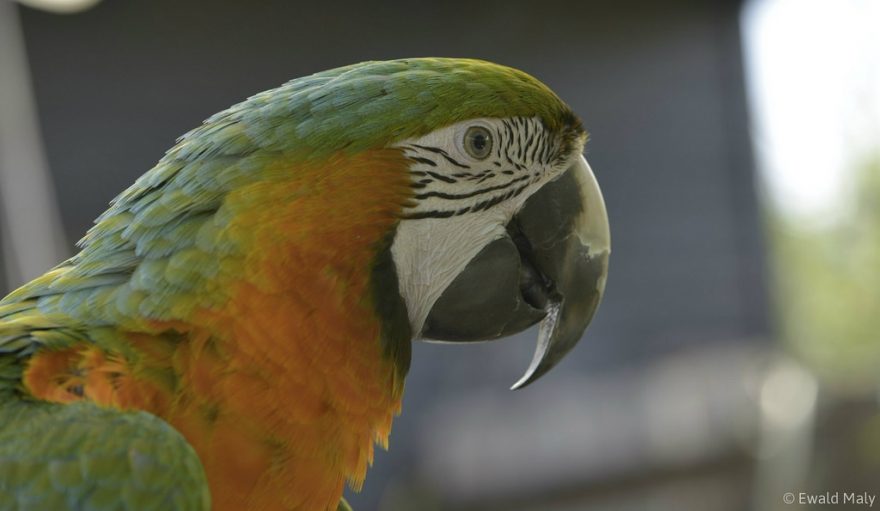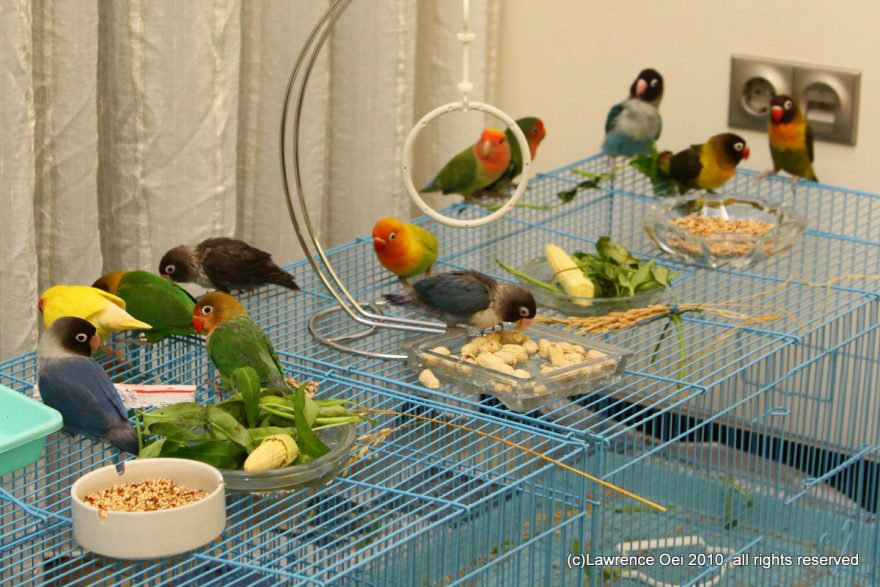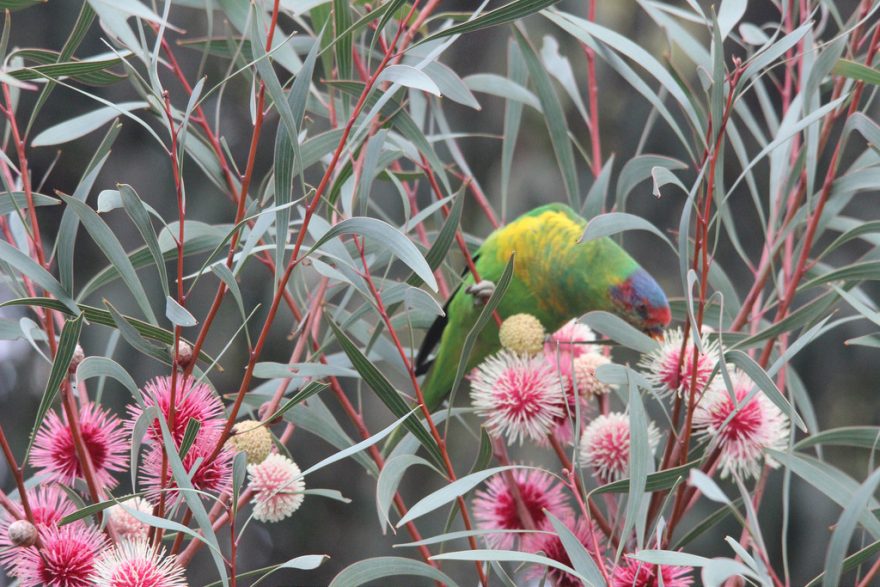Hybrids occur when birds from two different—but closely related—species are permitted to breed and produce an offspring. A hybrid bird’s size and colour is generally a mix of both parents. Hybrids are usually infertile (i.e. they cannot reproduce), however many species combinations can produce fertile offspring.

Hybridization—both intentional and accidentally—is generally discouraged in aviculture. In countries where it’s not possible to import or capture new birds, there is limited genetic diversity available in the captive stock of any particular species. Producing hybrids, especially fertile hybrids, pollutes the gene pool and can result in the original wild-type species becoming unavailable.
Species that can hybridize
There’s far too many possible hybrids to list all of them, but below is a list of some species you’re to encounter in aviculture.
Lovebirds
All of the different lovebird species can hybridize with each other. Hybrids produced between the species that have white fleshy rings around their eyes (Masked, Nyasa, Fischer’s, and Black-cheeked) produce fertile hybrids. It’s immensely difficult to get “pure” eye ring lovebirds because the bloodlines have in most captive stock has become thoroughly contaminated.

Parrotfinches
We’ve written a separate article on parrotfinch hybrids. The short version of that article is that all of the commonly available parrotfinch species can hybridize with one another, and that they will also (rarely) hybridize with the Gouldian finch.
True Finches
Most of the finches in the Fringillidae family can produce hybrids. This group includes canaries, siskins, chaffinches, linnets, goldifnches, greenfinches, twites and redpols. Fortunately, most of the hybrids between these species are infertile and there’s little risk of polluting the gene pool. Some breeders intentionally hybridize some of these species (typically goldfinches and canaries) to produce mules, which are said to be superior songbirds.
Neophema Parrots
All of the parrots in the Neophema genus are capable of hybridizing with one another. The closely related Bourke’s Parrot can also hybridize with Neophemas, but this is less common.
Rosellas
There’s half a dozen different rosella species and roughly 20 rosella subspecies, all of which can produce hybrids. Interestingly, because of their overlapping natural habitats, rosella hybrids do frequently occur in the wild and some of their subspecies are thought to be the result of hybridization.
Grassfinches
Masked finch, Long-tailed finch, and Black-throated finches will hybridize. These species also have sub-species which should be housed separately—however, among captive stock “pure” birds are very hard to find.
Waxbills
Red strawberry finches, green strawberry finches, orange breasted waxbills, red cheeked cordon bleu finches, and blue capped cordon bleu finches can all produce hybrids.
Asiatic Parrots
Hybrids can be produced between Plum-headed parakeets, blossom-headed parakeets, Indian ringneck parots, Alexandrine parrots, moustached parakeets, derbyan parakeets, slaty-headed parakeets and Malabar parakeets.
Many of these hybrid combinations produce fertile offspring which can pollute the gene pool. Interestingly, plum-headed parrot stock in Australia is believed to have been cross bred with other species (blossom-headed, as the story goes) in an attempt to boost their numbers and establish the species in captivity.
Australian Lorikeets
Similar sized Australian lorikeets are capable of producing hybrids. Some of these are quite attractive and—as they’re typically infertile—some breeders try to intentionally produce them and keep the offspring as pets.
Scaly-breasted lorikeets, musk lorikeets, purple crowned lorikeets, rainbow lorikeets, red-collared lorikeets, varied lorikeets, and little lorikeets can produce hybrids. Hybrids between some of these species occur in the wild where their natural ranges overlap.

Avoiding hybrids
The easiest way to ensure hybrids aren’t produce is to never house two species at risk of hybridization in the same aviary. You should also never house such birds in adjoining aviaries if there’s any possibility of them making contact through the wire. If you’re not sure what birds can be housed together, ask an experienced breeder or research the species thoroughly. All species articles on this website will list potential hybrids in the “Housing & Compatibility” section.
When housing species with a low (but still extant) risk of hybridization, you should make sure that all birds have a suitable partner of the same species and opposite-sex single birds are separated.
What if I accidentally produce a hybrid?
Though opinion varies, many breeders believe that the person who bred the bird has a moral obligation to keep the bird for its entire lifespan. The bird should be housed separately from pure-blooded birds to prevent accidental contamination of the gene pool, as it may be fertile.
You bred it – intentionally or accidently – you look after it. I have – I did.